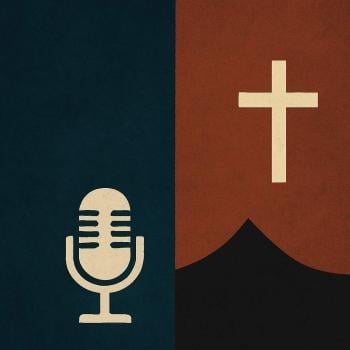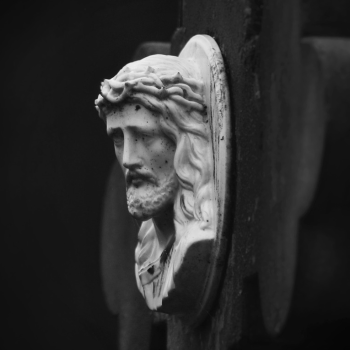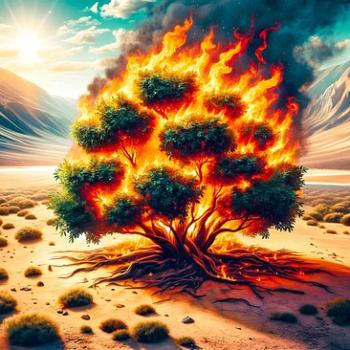
“God takes everyone he loves through a desert. It is his cure for our wandering hearts, restlessly searching for a new Eden.” – Paul E. Miller.
For most, the desert rarely conjures up images of God or Heaven. Yet the desert plays a significant role in the Bible and has provided a wealth of spiritual treasure within the Catholic tradition.
The following article will discuss how the Bible portrays the desert. I will review some of the significant passages that involve the desert and discuss what spiritual interpretations may be gleaned from the text. I will discuss the metaphorical connection between the season of Lent and the desert. Finally, I will consider the importance of the desert on the Church Fathers and in monasticism in the Catholic tradition.
A note about language; the Hebrew word “midbar” can be translated as “wilderness” or “desert.” Also used to connote the desert is the word “arabah.” For the purposes of this work, I will use wilderness and desert synonymously.
The Desert in Scripture
At various points in the Bible, the desert signifies Divine judgment, penance, purification, and preparation. It is possible to see all of these elements in the events following the Israelites’ escape from slavery in Egypt.
The exodus from Egypt depicts how Moses led the people of Israel as they wandered in the desert. God cares for the Israelites, providing for their food and water. Yet, despite this, the Israelites complain, often drawing Divine judgment. (Exodus 16:3).
God’s wrath finds its culmination in the Book of Numbers. In it, we read how the Israelites were punished for their failures to believe in the promises of God. (See Numbers 14:23 and Numbers 14:34). This punishment included wandering in the wilderness for forty years.
While it is impossible to divorce the forty years in the desert from the punishment for disbelief, the period in the wilderness should also be considered a process of penance, purification, and preparation. Indeed, this motif appears at various points in the Bible.
Perhaps nowhere else is this process of purification and preparation more on display than in the account of Jesus’ forty days in the desert.
In each of the synoptic Gospels is the story of the Temptations of Christ. After His baptism, Jesus is led into the desert by the Holy Spirit. Here He is confronted with the great temptations of this world; things of the flesh and the temptations of pride and of power. It is only after resisting these temptations in the desert that Jesus is ready to begin His ministry.
It can be seen from the Gospel accounts the significance that the desert has on spiritual life. Within the biblical worldview, time spent in the desert is time for penance, purification, and preparation. For Catholicism, these practices are foundational to the season of Lent.
Lent In The Desert – Penance, Purification, and Preparation.
In many ways, the season of Lent is meant to be the time when the Catholic follows Christ into the desert. Of course, this need not be understood literally. One can enter into a spiritual desert without ever traveling to a physical desert.
Nevertheless, during the Lenten season, Catholics are to enter into the “desert” to offer penance and cleanse themselves of worldly attachments. In doing so, one prepares to meet the resurrected Jesus in the Easter celebration.
The first effect of entering the desert, whether literal or metaphorical, is to offer penance. Penance begins with seeking forgiveness. This often entails partaking of the sacrament of reconciliation. Traditionally, penance includes fasting, praying, and giving to the poor (almsgiving).
Once accomplished, the process of purification can begin. In the austerity of the desert, those attachments that keep us from God can be slowly stripped away. Things like money, sex, and power that bind us to this world must be rooted out. Only then can one be open to hearing God. Yet to hear God, we must be silent enough to listen to that still small voice of God. (1 Kings 19:11-13). We must be willing to detach ourselves from the world and do so in silence.
For this reason, the monks of the early Church sought out the solitude and silence of the desert.
The desert and the Church Fathers/Monasticism
Sometime in the second century AD, monks began to inhabit portions of the desert in the Middle East. These monks would later become known as the “Desert Fathers.”
The desert fathers left civilization behind for several reasons. As Thomas Merton points out, the desert fathers saw civilization as a sinking ship. (Merton, Thomas. The Wisdom of the Desert. New Directions Publishing. 1970). To flee to the desert was to survive a shipwreck. Yet more critical to the desert fathers was committing themselves totally to being disciples.
To be a disciple means following Jesus, which required these men to sell their possessions and give their money to the poor. (Matthew 19:21). In so doing, the desert fathers sought most of all to experience union with God in the quiet of the desert and in the silence of their hearts. The desert environment allows for the solitude necessary to purify the soul, while silence allows one the possibility to converse with God. Additionally, the sparsity of the desert required the desert fathers to “become like children,” wholly dependent upon God.
In time, the desert fathers developed a process that would become foundational to Catholic mysticism. This process involved three steps: the Purgative, the Illuminative, and the Unitive.
During the purgative stage, monks sought to control the desires of the flesh, such as lust or the desire for possessions. This stage could take several years.
Once completed, the monks entered the illuminative stage. At this time, the monks practiced the holiness articulated in the Sermon on the Mount. This stage involved the monks teaching and caring for the poor.
The last stage developed by the desert fathers was unitive. During this stage, the monks were to grow in union with God. The unitive stage often led the monks to remove themselves entirely from human contact, living alone in the desert or wilderness. This stage was meant to allow the monk to identify with the transfigured Christ.
Conclusion
The desert, both as a physical location and as a metaphor for a kind spiritually, has played a unique role in the Bible and in Catholic theology and mysticism.
The asceticism necessary to live in such a harsh environment leads to the stripping away of anything and everything that keeps one from God. And isn’t that what Lent is all about?












